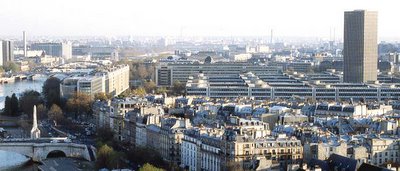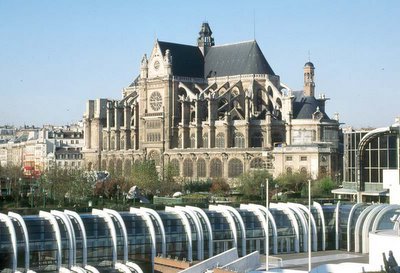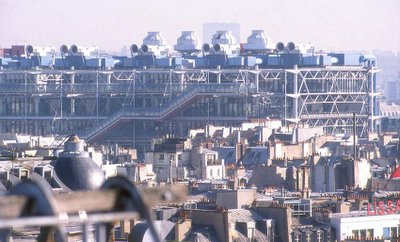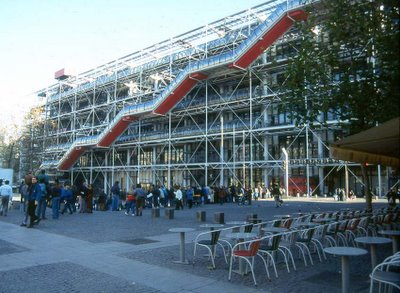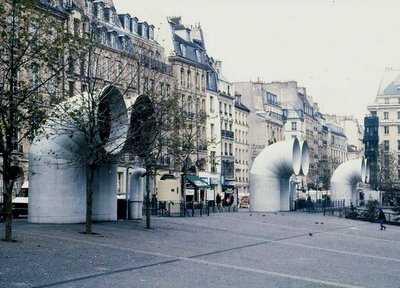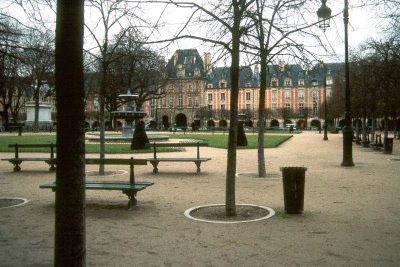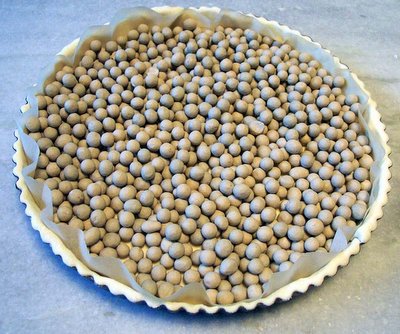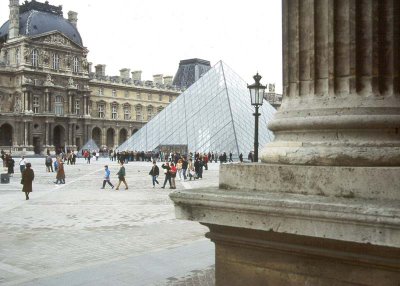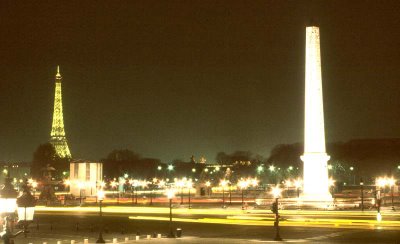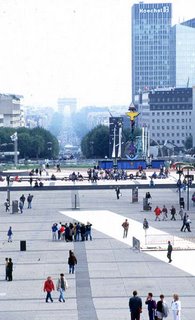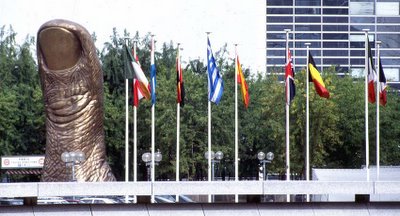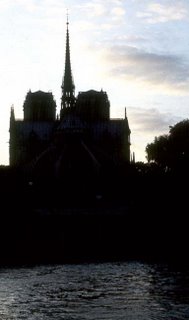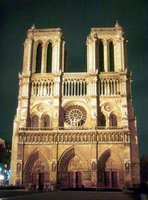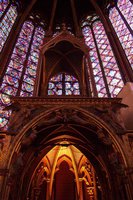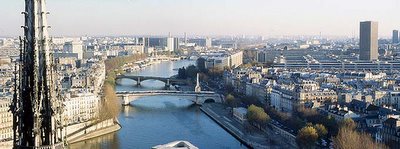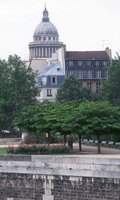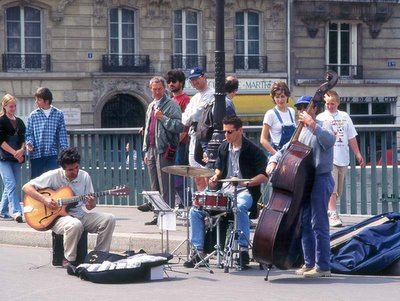Susan Spano, a travel writer for the Los Angeles Times, writes a blog about her experiences in Paris called “Postcards from Paris.” Her observations and insights are often interesting. In her blog entry for January 29, however, Ms. Spano cannot resist that all-too-familiar urge to be critical of Paris architecture. She mentions five examples of what she calls “really ugly modern buildings that don’t seem to belong” in her vision of what Paris should look like. She does single out the Louvre pyramid and the Pompidou Center as exceptions (really ugly modern buildings that do seem to belong?).
We’ve all done it. Architecture is out there for us all to see, and we all have our opinions. It’s like art. Actually, it is art. And, since opinions are what blogs are for, here is mine: on this topic, Ms. Spano is full of, well, merde.
Her first offender, l’Hôpital des Quinze-Vingts, is a building that I don’t know, so I cannot comment on it. But I do know the other four.
Bad Building #2 is the Faculté des Sciences at Jussieu in the Latin Quarter (photo below). Yes, the complex was built in the 1960s, but it is a fine, although perhaps not the most elegant, example of the modern, or international, style of architecture. The buildings do suffer from functional problems and are currently undergoing renovation and a massive asbestos removal. But, are they inherently ugly? I don’t think so. In fact, I quite like the way the ordered, rectilinear complex highlights the more organic feel of the older city around it.
Spano’s third ugly duckling is the UNESCO headquarters complex in the 7th Arrondissement (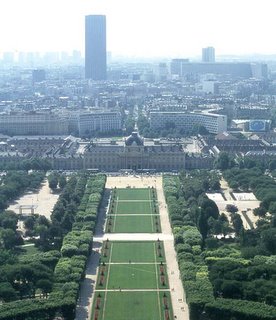 center right in this photo). Here there is a serious lack of maintenance that doesn’t help matters, but the curves of the Y-shaped main building work quite well on the semi-circular Place de Fontenoy, reflecting but not copying the form of the other buildings on the Place. According to Spano, the building’s primary fault is that it was “designed in the 50s by a team that included the noted International School architect Marcel Breuer.” Gee, that really nails it.
center right in this photo). Here there is a serious lack of maintenance that doesn’t help matters, but the curves of the Y-shaped main building work quite well on the semi-circular Place de Fontenoy, reflecting but not copying the form of the other buildings on the Place. According to Spano, the building’s primary fault is that it was “designed in the 50s by a team that included the noted International School architect Marcel Breuer.” Gee, that really nails it.
 center right in this photo). Here there is a serious lack of maintenance that doesn’t help matters, but the curves of the Y-shaped main building work quite well on the semi-circular Place de Fontenoy, reflecting but not copying the form of the other buildings on the Place. According to Spano, the building’s primary fault is that it was “designed in the 50s by a team that included the noted International School architect Marcel Breuer.” Gee, that really nails it.
center right in this photo). Here there is a serious lack of maintenance that doesn’t help matters, but the curves of the Y-shaped main building work quite well on the semi-circular Place de Fontenoy, reflecting but not copying the form of the other buildings on the Place. According to Spano, the building’s primary fault is that it was “designed in the 50s by a team that included the noted International School architect Marcel Breuer.” Gee, that really nails it.Next in Spano’s gun sights is the Montparnasse tower, a 52 story office building at the end of the rue de Rennes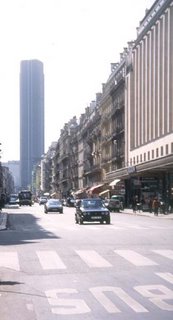 . Her criticism: it’s “totally out of scale, at 680 feet, so you can't avoid it.” There are many tall structures in Paris, and a lot of them can be seen from a distance, depending on where you are in the city, and many of them are more offending than Montparnasse. The Montparnasse tower boldly punctuates the rue de Rennes like an enormous exclamation point. It’s bowed exterior walls are quite elegant as they rise skyward and reflect the rising or setting sun. The tower’s location lines it up nicely with its more adored sister, the Eiffel Tower. The views of the city from the 52nd floor observation deck rival those you get from the Eiffel Tower, and you don’t have to wait in those long lines to go up.
. Her criticism: it’s “totally out of scale, at 680 feet, so you can't avoid it.” There are many tall structures in Paris, and a lot of them can be seen from a distance, depending on where you are in the city, and many of them are more offending than Montparnasse. The Montparnasse tower boldly punctuates the rue de Rennes like an enormous exclamation point. It’s bowed exterior walls are quite elegant as they rise skyward and reflect the rising or setting sun. The tower’s location lines it up nicely with its more adored sister, the Eiffel Tower. The views of the city from the 52nd floor observation deck rival those you get from the Eiffel Tower, and you don’t have to wait in those long lines to go up.
 . Her criticism: it’s “totally out of scale, at 680 feet, so you can't avoid it.” There are many tall structures in Paris, and a lot of them can be seen from a distance, depending on where you are in the city, and many of them are more offending than Montparnasse. The Montparnasse tower boldly punctuates the rue de Rennes like an enormous exclamation point. It’s bowed exterior walls are quite elegant as they rise skyward and reflect the rising or setting sun. The tower’s location lines it up nicely with its more adored sister, the Eiffel Tower. The views of the city from the 52nd floor observation deck rival those you get from the Eiffel Tower, and you don’t have to wait in those long lines to go up.
. Her criticism: it’s “totally out of scale, at 680 feet, so you can't avoid it.” There are many tall structures in Paris, and a lot of them can be seen from a distance, depending on where you are in the city, and many of them are more offending than Montparnasse. The Montparnasse tower boldly punctuates the rue de Rennes like an enormous exclamation point. It’s bowed exterior walls are quite elegant as they rise skyward and reflect the rising or setting sun. The tower’s location lines it up nicely with its more adored sister, the Eiffel Tower. The views of the city from the 52nd floor observation deck rival those you get from the Eiffel Tower, and you don’t have to wait in those long lines to go up.Finally, Spano quickly dismisses the Les Halles complex in the center of the city as “equally notorious” and reports that it will undergo a major makeover (see photos in my previuos post). Ok, but why does she think it’s ugly? She doesn’t let us in on it. The buildings are mostly underground, topped by a green park of significant size. Trees, shrubs, grass and flowers. The underground shopping center, or Forum, is visible from the street level, its white steel arches and glass walls taking two curved jumps down into a central courtyard whose purpose is most likely to bring natural light into the corridors of the mall. The steel arch and glass wall motifs are repeated in above-ground buildings on two sides of the Forum. They provide a very modern counterpoint to some of the historic (and not so historic) buildings that border the site. Les Halles may not be everyone’s architectural cup of tea, but it successfully reconnected neighborhoods that bordered the former central market halls on the site and gave Paris some much needed breathing room in an otherwise congested central city quarter. I’m looking forward to the makeover, but probably not for the same reasons as Susan Spano.

